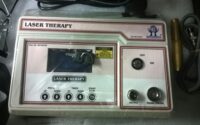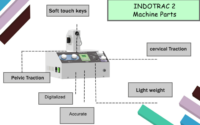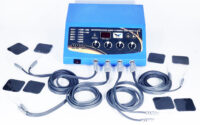What is the best remedy for cervical pain?
ervical pain can be caused by various conditions, including muscle strain, nerve damage, herniated discs, and arthritis, among others. The best remedy for cervical pain will depend on the underlying cause of the pain. Here are some common remedies that can help alleviate cervical pain:
- Physical therapy: Physical therapy can help improve neck strength and flexibility, relieve pain, and prevent future pain.
- Pain medications: Over-the-counter pain medications such as ibuprofen or acetaminophen can help relieve mild to moderate cervical pain.
- Hot and cold therapy: Alternating between hot and cold compresses can help reduce pain and swelling in the neck.
- Massage: Massage therapy can help relieve tension and pain in the neck muscles.
- Chiropractic care: Chiropractic care can help alleviate neck pain by adjusting the spinal column and improving posture.
- Acupuncture: Acupuncture is a traditional Chinese therapy that involves the insertion of thin needles into the skin to relieve pain and improve circulation.
- Stretching and strengthening exercises: Specific exercises can help improve neck flexibility, strength, and stability, reducing the risk of pain.
It is important to consult a healthcare provider to determine the underlying cause of your cervical pain and develop an appropriate treatment plan. In some cases, a combination of these remedies may be necessary to effectively manage cervical pain.

What is the best treatment for cervical dystonia?
Cervical dystonia, also known as spasmodic torticollis, is a movement disorder characterized by sustained muscle contractions that cause the head to twist or turn involuntarily. The best treatment for cervical dystonia will depend on the severity of the condition and the individual’s specific needs and preferences. Here are some commonly used treatments for cervical dystonia:
- Botulinum toxin injections: Botulinum toxin injections, also known as Botox, are the most commonly used treatment for cervical dystonia. They work by temporarily paralyzing the affected muscles, reducing pain and improving head movement.
- Medications: Certain medications, such as anticholinergics, can help relieve symptoms of cervical dystonia.
- Physical therapy: Physical therapy can help improve neck flexibility, strength, and stability, reducing the risk of pain and improving overall function.
- Surgery: In severe cases, surgery may be necessary to correct the underlying cause of cervical dystonia.
- Deep brain stimulation (DBS): DBS is a surgical procedure that involves the placement of electrodes in the brain to deliver electrical stimulation to specific areas. This procedure can be effective in reducing symptoms of cervical dystonia.
It is important to consult a healthcare provider, who can evaluate your individual case and recommend the most appropriate treatment plan. In some cases, a combination of these treatments may be necessary to effectively manage symptoms of cervical dystonia.



